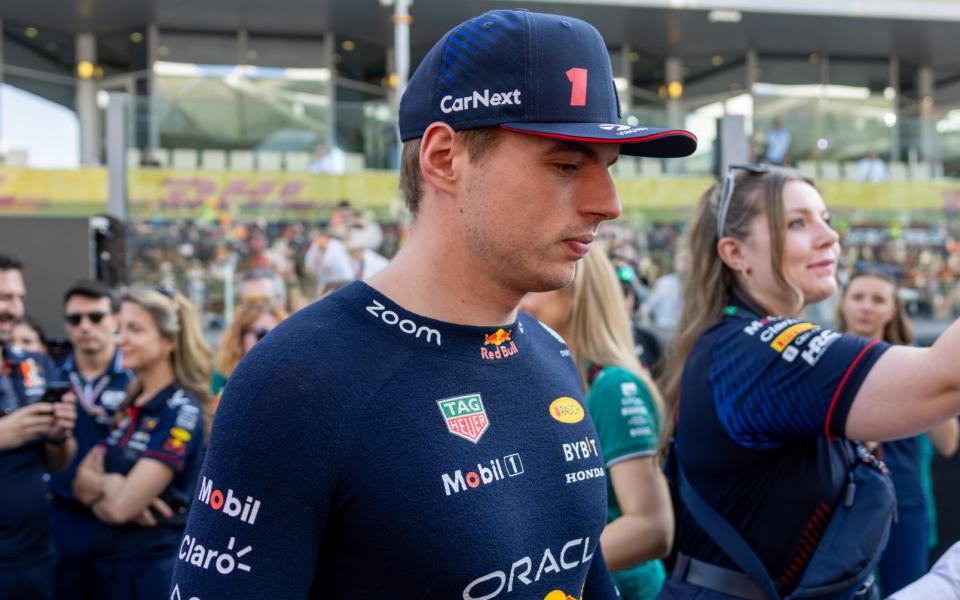Formula One has announced the six races that will take place next season, although the format for that weekend is still being scrapped and reverse grids are still on the table.
China, Miami, Austria, Circuit of the Americas, Brazil and Qatar are the six races that will take place on a sprint weekend in 2024.
China and Miami will make their debuts, replacing Azerbaijan and Spain from this year’s sprint team.
The format is now the only thing left to decide. It is understood that the qualifying sprint is almost certain to return on Friday followed by a sprint on Saturday as well as the main qualifying session for the grand prix.
But everything else – including the possibility of reverse grids – is still up in the air.
Sprint races, shorter events held during the race weekend, with a handful of championship points available, were introduced for the first time in 2021 in an attempt to spice up a weekend, giving venues the opportunity to have three days of competitive running at them.
Formula One claims they have been successful, with viewing figures increasing year on year, especially on Fridays compared to regular free practice sessions. But they are still controversial with fans and some drivers.
Triple world champion Max Verstappen is an outspoken critic, even going so far as to say he will quit the sport if Formula One moves too far from its “DNA”.


This season saw a few tweaks to the format, with Friday’s qualifying session deciding the grid for Sunday’s main race, as opposed to Saturday’s sprint, as previously. There was then an independent ‘sprint day’ on Saturday, with a shortened ‘shoot-out’ on Saturday morning, followed by a sprint race in the afternoon.
However, following a meeting of the F1 Commission at the final race of the season in Abu Dhabi last month, it was agreed that the format needed further reform as it was not providing as much entertainment as expected. .
Formula One chief executive Stefano Domenicali said in a statement that “hosting China and Miami would be great additions and provide great racing for all our fans at the race and watching at home” .
He added: “Since its creation in 2021, the sprint has been consistent in delivering increased viewership on television, more on-track entertainment for fans at events and increased fan engagement on social and digital platforms, and we looking forward to next year’s exciting events.”
Meanwhile, Madrid look set to be awarded the Spanish Grand Prix at the expense of Barcelona, with reports that a 10-year deal from 2026 has been agreed. Talks have been going on for over a year. Madrid last hosted a Formula One race in 1981 at Jarama. The proposed race would take place on a semi-permanent track near the Barajas Airport in the northeast of the city.
Sprints are here to stay – but a reverse grid could spark outrage
Although they remain controversial, Formula One does not seem to be turning away from the subject of sprints. Not even Max Verstappen’s warning via Telegraph Sport a few weeks ago that Formula One was at a “tipping point” when it comes to putting entertainment before the sport can convince interested parties that they are a bad idea. F1 owners point to an increase in TV viewing figures and also note that promoters are seeing increased sales, particularly on Fridays.
The only issue is with the layout and Christian Horner, Red Bull team principal, said at the recent Abu Dhabi Grand Prix that “the grid is not static at the moment, it tends to stay in grid order and in some ways it feels like he’s getting a medal. for long…”
It is understood that discussions are still ongoing and that a final proposal will be submitted to the F1 Commission in January. But it is already pretty much agreed that the sport will go back to sprint qualifying on Friday followed by a sprint on Saturday as well as the main qualifying session.
The rest of the weekend could be kept largely as it is, apart from minor changes to the park ferme rules. As it stands cars are put under parc ferme rules after Friday morning’s free practice session, meaning teams are locked into their car setups and subject to strict limits on what items they can change for the rest of the weekend.
Reversing part of the grid for the sprint is a more radical move, although this is likely to provoke anger among some fans.
“This is where you have to do the research,” Horner said in Abu Dhabi. “I think fan feedback will play a vital role. What do they want? Do they enjoy the sprint format as it is or do they want to see a bit more racing? If we are going to do that, how are we going to award points? How are we going to incentivize drivers and teams?”
Whatever is decided, it is assumed that the sport needs to stop endless tweaks, especially so that they can get some accurate data year after year. That also applies to the number of sprint races, with six remaining at the maximum in the short term.